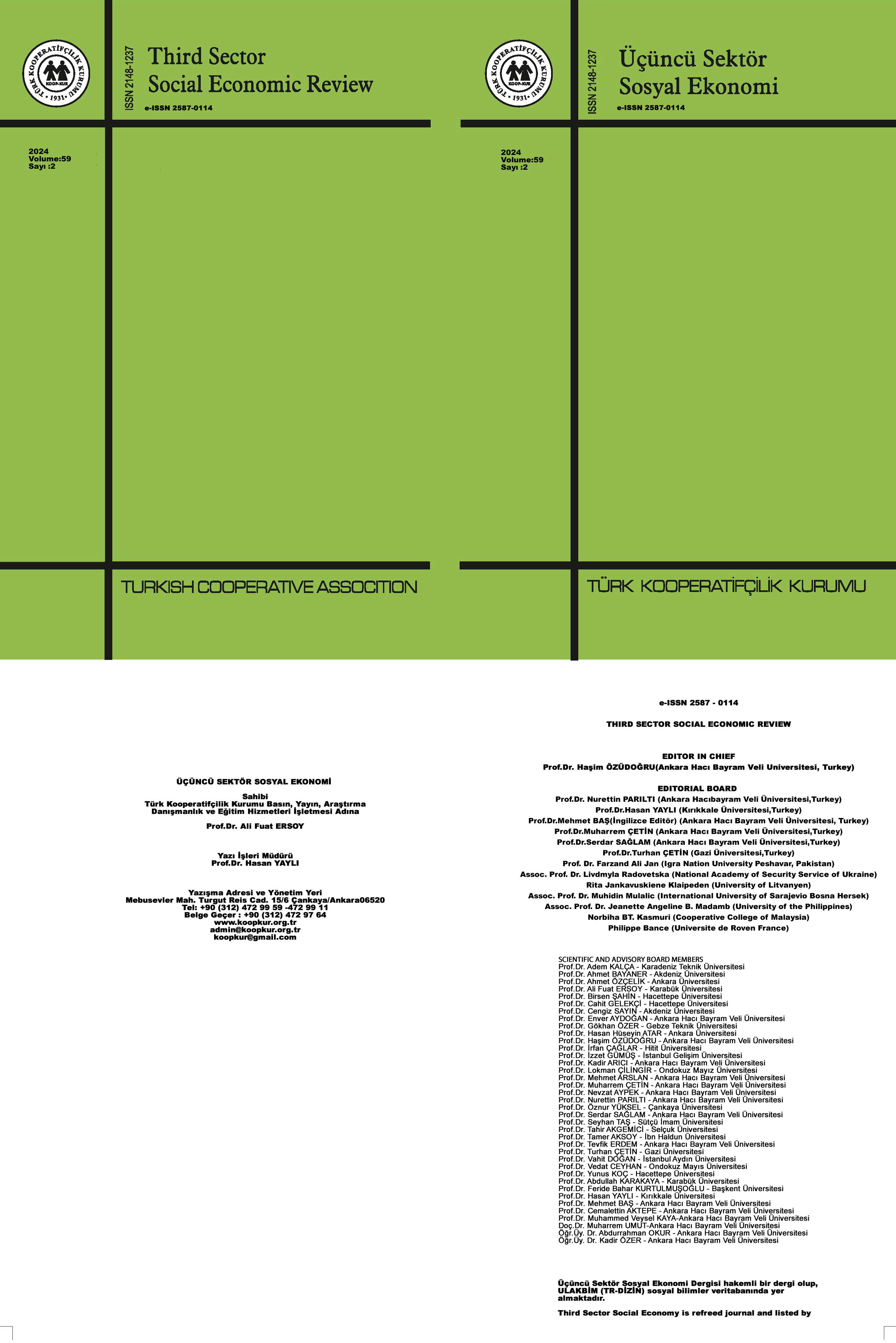Yıl: 2022 Cilt: 57 Sayı: 3 Sayfa: 1623-1636
doi: 10.15659/3.sektor-sosyal-ekonomi.22.07.1874
YENİ EKONOMİK COĞRAFYA VE EKONOMİK ENTEGRASYON
ŞEKİP YAZGAN
Ekonomik entegrasyon, başka bir ifadeyle ticaretin serbestleştirilmesi, ülkelerdeki ekonomik faaliyetlerin mekânsal dağılımlarında değişikliklere neden olabilmektedir. Yeni Ekonomik Coğrafya Teorisi, ticaretin serbestleştirilmesinin mekânsal boyutunun ortaya konulmasında önemli bir analitik çerçeve sağlamaktadır. Yeni Ekonomik Coğrafya teorisi, ekonomik faaliyetlerin kendilerine yerleşim alanı olarak neden belirli yerleri seçtiği sorusunun cevabını merkezcil güçler ve merkezkaç güçleri olarak adlandırılan birbirine zıt güçler arasındaki etkileşimle açıklamaktadır. Yeni Ekonomik Coğrafya Teorisi için merkez-çevre modeli temel model olarak kabul edilmektedir. Çalışmada, Yeni Ekonomik Coğrafya Teorisinin temel modeli olan merkez-çevre modeli çerçevesinde ekonomik entegrasyon/ticaretin serbestleştirilmesinin ekonomik faaliyetlerin konumlanması üzerine etkilerini araştıran teorik/ampirik çalışmalarda ulaşılan sonuçların değerlendirilmesi amaçlanmaktadır. Yeni Ekonomik Coğrafya Teorisinin temel modeli olan merkez-çevre modeli çerçevesinde inceleyen çalışmalarda elde edilen sonuçların birbirlerine zıt sonuçlar elde edilen iki grupta toplanabileceği görülmektedir. Söz konusu çalışmaların bir bölümü, ekonomik entegrasyonun imalat sanayini ülke içerisinde dağılma yönünde teşvik ettiğini ortaya koyarken, çalışmaların diğer bir bölümü ise ekonomik entegrasyonun mekânsal yoğunluğun artmasına neden olduğunu göstermektedir. Bu kapsamda elde edilen birbiriyle çelişkili söz konusu sonuçların ortaya çıkmasında, merkezcil ve merkezkaç kuvvetleri arasındaki hassas ilişkilerin önemli bir rol oynadığı düşünülmektedir. Bu çerçevede, varsayımlarının değiştirilmesinin elde edilecek sonuçları etkileyeceği değerlendirilmektedir.
Anahtar Kelimeler (Keywords): Ticaret, Ekonomik Entegrasyon, Yeni Ekonomik Coğrafya, Ekonomik Aktivitelerin Mekânsal Dağılımı.
NEW ECONOMIC GEOGRAPHY AND ECONOMIC INTEGRATION
Economic integration, in other words, liberalization of trade, can cause changes in the spatial distribution of economic activities in countries. The New Theory of Economic Geography provides an important analytical framework for revealing the spatial dimension of trade liberalization. The New Economic Geography theory explains the answer to the question of why economic activities choose certain places as settlement areas, with the interaction between centripetal forces and opposing forces called centrifugal forces. The center-periphery model is accepted as the basic model for the New Economic Geography Theory. In the study, main aim is to evaluate the results of theoretical/empirical studies investigating the effects of economic integration/trade liberalization on the positioning of economic activities within the framework of the center-periphery model, which is the basic model of the New Economic Geography Theory. It can be concluded that the results obtained in studies examining within the framework of the center-periphery model, which is the basic model of the New Economic Geography Theory, can be gathered into two groups with opposite results. While some of the aforementioned studies reveal that economic integration encourages the manufacturing industry to disperse within the country, another part of the studies demonstrates that economic integration causes an increase in spatial density. It is contemplated that the sensitive relations between centripetal and centrifugal forces play an important role in the emergence of these contradictory results obtained in this context. Therefore, it is considered that changing the assumptions will affect the results to be obtained.
Anahtar Kelimeler (Keywords): Trade, Economic Integration, New Economic Geography, Spatial Distribution of Economic Activities.
Tam Metin 416











